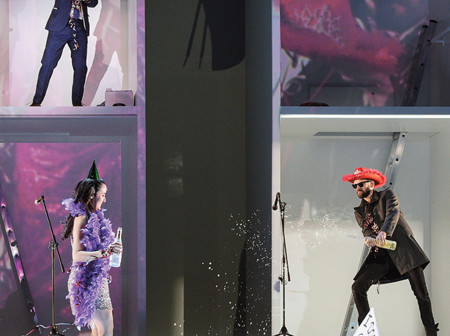Jazz and astronomy might seem worlds apart, but Darsan Swaroop Bellie has found connections that make his heart sing.
Bellie ’22, who holds a dual degree in jazz studies and physics from Northwestern, is a fellow at the University’s Center for Interdisciplinary Exploration and Research in Astrophysics (CIERA), where he conducts research on gravitational waves, compact objects and cosmology. Merging his seemingly disparate passions, he created the Star Eyes Initiative this year, a jazz group that uses original compositions to communicate scientific concepts in a digestible way, for audiences of all ages.
“Sound is vibration,” Bellie says. “Unlike most astronomical observations, which you can detect [using] a telescope, you can’t really see [gravitational waves]. [You have to hear them.] You’ll often hear astronomers say that gravitational waves produce ‘the symphony of the universe.’”
An avid drummer and composer, Bellie wrote his first Star Eyes Initiative composition, “Dance of the Black Holes,” this year. Inspired by his research, the piece portrays the merging of two black holes in space. The changes in tempo and key signature indicate the varying levels of gravitational wave emission associated with each phase of the merging process. Bellie assembled a jazz quintet — including Lenard Simpson, Mikey Ahearn ’23, Jesse Lear ’23 and jazz studies professor Jeremy Kahn — to perform the piece at the LIGO–Virgo–KAGRA gravitational waves conference hosted by CIERA in March. (LIGO–Virgo–KAGRA is an international network and collaboration between the LIGO Scientific Collaboration, Virgo Collaboration and KAGRA Observatory, which operate the Laser Interferometer Gravitational-Wave Observatory [LIGO], Virgo Gravitational Wave Interferometer [Virgo] and Kamioka Gravitational Wave Detector [KAGRA].)
“I never expected that the first Star Eyes performance would be [in front of] an audience of scientists who actually do the science that I’m trying to describe through the music,” Bellie says.
For Bellie, the improvisational nature of jazz has been “a gateway to a world of musical exploration.” Likewise, he calls astronomy a “gateway science,” as many students are introduced to it during elementary school and become fascinated by space. “It allows you to get to other [fields],” he explains. “Astronomy is physics. And if you start doing physics, maybe then you say, ‘What if I applied this [to] engineering?’ Or you’re thinking about our place in the universe, so you ask, ‘What makes Earth habitable?’ That [can lead you to] the Earth and life sciences and everything in between.”
Bellie plans to use future musical compositions to explore scientific fields beyond astronomy. He will collaborate with other artists, as well, including Kyle Kremer ’12, ’18 MMus, ’20 PhD, who created Cosmos in Concert, an orchestral concert of classical music performed in sync with projections of scientific images and animations.
“The goal is to get people thinking about the wonders of the universe,” says Bellie, who is starting a doctoral program in physics at Northwestern this fall as a National Science Foundation graduate research fellow.




Reader Responses
No one has commented on this page yet.
Submit a Response